“Captains Log. Stardate, 2330. Today we boldly went where none have gone before. A routine mission to catalogue the flora and fauna of an unsurveyed world became a fight to the death. And our phasers weren’t set to stun!”
Starfield, Bethesda’s highly anticipated and mysterious RPG is finally here. And with it, Bethesda’s most ambitious game yet. This is no small feat for a developer whose open-world RPGs have consistently set a benchmark for scale and ambition. With a meaty campaign, an NG+ mode that brings something completely new to the Bethesda table and a galaxy full of scope, Starfield, quite possibly dwarfs it all. It is, also, a Bethesda game in which most players likely won’t see all there is to see.
Life here starts off for you as a lowly intergalactic miner before a chance encounter with an ancient artefact floods your mind with visions. Before you know it, fate guides you to Constellation, a group of explorers still searching the stars for more. And that more is further artefacts that will throw you across a galaxy-spanning adventure to find out what they mean.
That, in a nutshell, is Starfields story. Well, the beginning of it anyway. But as with all Bethesda games, it’s merely the beginning of a massive adventure that will have you playing intergalactic delivery man, detective, law enforcer and, even, a space pirate if you so please.
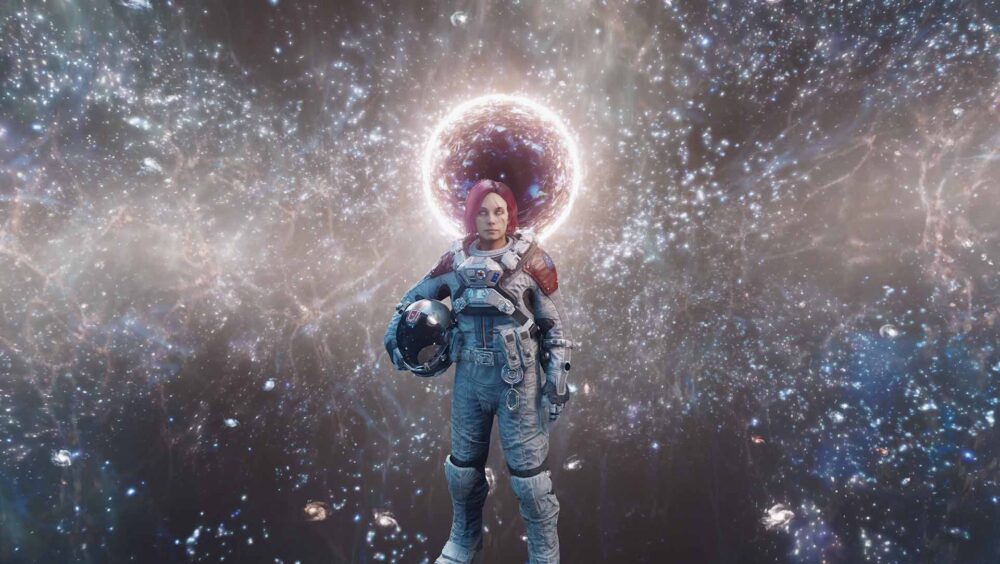
Bethesda’s RPGs, most specifically the Elder Scrolls, have been about more than just creating a straight-laced story. They’ve been about building virtual worlds, about giving you the keys to the kingdom and saying “Go forth and adventure”. They’re about a virtual life, even if you have to complete that main quest someday.
And Starfield carries that DNA forth into the ultimate frontier. But, it’s also something new for Bethesda, thematically and design-wise. Starfield is, a game of two parts, two identities and a wealth of ambition that doesn’t always fit.
What does work is its hand-crafted content, the sprawling world and multi-layered quests that will suck away your time. A quest to find and deliver a suitcase can turn into a galaxy-hopping fugitive hunt. I loved how you could pick up quests just from seemingly random conversations in the street or text logs you acquire. It constantly gave me something to do when I didn’t feel like having to speak to anyone to pick up a new quest line.
It’s fantastic how many approaches to quest completion you get, along with world design that takes these choices into account. You can stealth your way to victory, go in guns blazing or, my favourite, de-escalate a situation through conversation. Sure it’s all based on background dice rolls, but it’s just so satisfying when it works.

But if you want to plug holes in everything, Starfields combat and its weapons are excellent just for that. Combat is smooth, tight, meaty and challenging, at least on normal difficulty. Dice rolls still apply but the game plays like a standard FPS in combat. And being able to boost pack around or low gravity jump while you do it is an excellent feeling.
The game levelling up and abilities systems are a nice combination of traditional levelling and some of Skyrim’s “use-‘em” aesthetic. It doesn’t seem to take too much XP to level but for every ability you unlock, which can be upgraded multiple times, you’ll have to complete some mini-challenge such as taking specific amounts of damage or boost jumping in combat before you’re able to unlock the next level. It may not be as effective as Skyrim’s system, but it does help to make you more invested in what you’re unlocking.
There’s just so much to do that it’s mind-boggling how quickly you can get side-tracked. There are items to research, crafting for all of your gear and items, outposts that you can establish and then customise to earn you resources and XP, planets to explore and, finally, starship upgrading and customising. There are plenty of new star ships for you to buy and you can upgrade their weapons, drives, and armour, etc. You can customise them as well, by swapping parts in and out and rearranging them in a modular fashion.
And if you’re not impressed with the default ships, you can build your own. Certain rules will apply, such as making sure there are doors between compartments but, if the internet is anything to go by currently, your imagination is the limit. This alone will take up hours of your time.
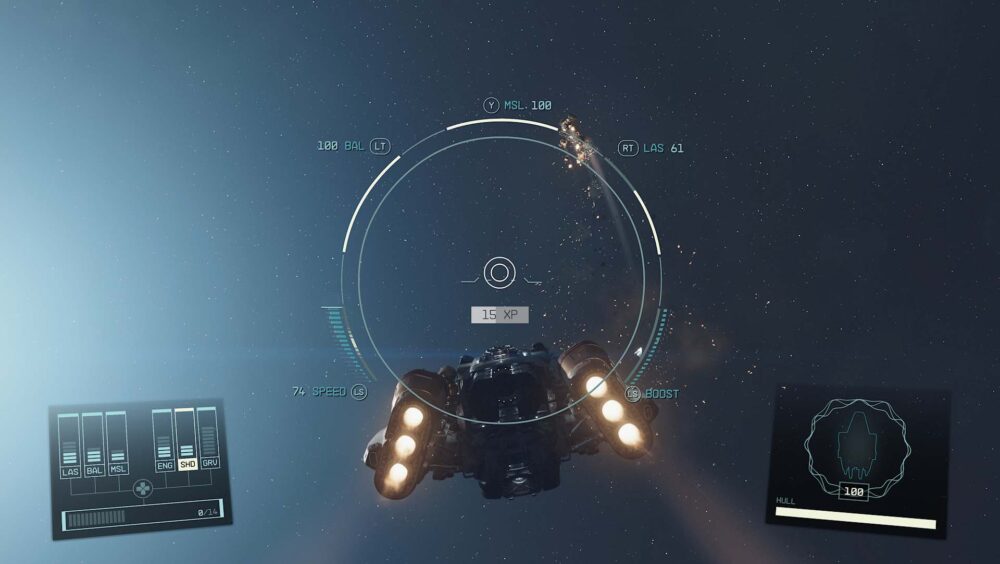
The world design, for the hand-crafted content is absolutely stunning. The “Nasa-Punk” design ethos, the granularity of the visuals, from environmental objects to location design, from clothes to weapons, is absolutely stunning. Handwritten notes on paper and walls, the buttons, knobs and levers that make up all of the consoles in the world are stunningly reproduced and rendered.
The game’s locations, both outside and in, have been stunningly and painstakingly modelled and put together. From the clutter in interiors to the physics powering it all, it’s a Bethesda speciality. The design ethos screams a more believable realism of modular construction, as this is what humanity’s starfaring future would look like based on how we’re building things at the moment. Outside of the more fanciful moments, such as grav jumps and special abilities, Starfield feels like a more realistic take on space travel and planetary colonisation, within limits. And it really is stunning and grounding in all the right ways.
Starfield is also a rather gorgeous game. Not quite this gen gorgeous, but its visuals are a massive step up from Skyrim and Fallout. Character models and animation are a noticeable improvement from Bethesda’s prior games but it’s the environment design and detail that is absolutely stunning. Whether you’re walking into the Cyberpunk-ish Neon for the first time, standing on a ridge staring at a gas giant or just marvelling at Cydonia descending into the depths of a Martian mountain, ala Paul Verhoeven’s Total Recall, Starfield emits moments of visual splendour.
Which makes Starfields issues all the more disappointing.
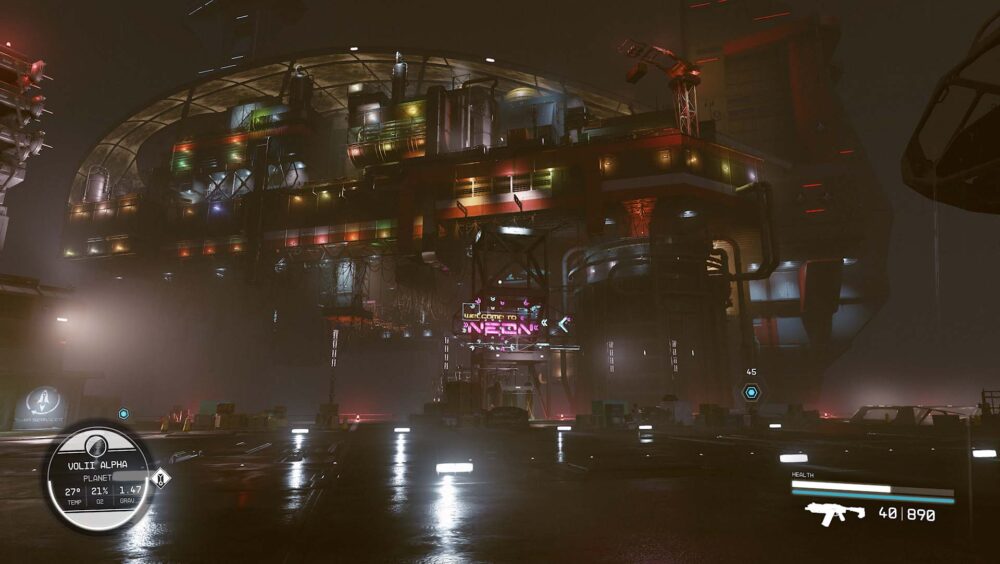
Starfield is a game about exploration, about veering further into the great unknown, which makes the fact that its actual exploration borders on unremarkable to tedious incredibly sad.
Starfields planets make use of procedural generation. You can’t explore the entire planet on foot. Instead when you touch down, a large section of landscape is generated around you procedurally, including flora, fauna, natural formations and structures. And despite the idea behind procedural generation being the infinite number of ways things can be put together, the reality is sadly underwhelming. It lacks the finesse of artistically designed environments, that specific drive that funnels you to explore a cave or scale a mountain to see what’s there. Proc gen has always shown its limitations through quickly set-in repetition and that’s no different here.
It won’t be long before you’re exploring the same mostly empty, barren landscapes or running through a cryo research station with the exact same layout, enemy locations and item placement. And I say that keeping in mind the seemingly endless copy-and-paste Dwemer and Ayleid ruins I spelunked through in Elder Scrolls.

Then there’s the distance between things on the map and that you have to hoof it all on foot. Even with a booster pack, it’s tedious running across the landscape from one distant location to another. Couple that with how little interest there is to do between structures and the lack of some form of vehicle transport is a crime. It’s even worse when you realise that you’re O2 meter is basically a stamina bar and you’re forced to slow down when it depletes or takes CO2 damage. And if you’re encumbered, well then you can look forward to much longer slogs across the environment as fast travel gets disabled.
And when you’re not running, you’ll be scanning the environment for resources and life forms to complete a survey of it. While it may be realistic that most planets barely support life and are rocky landscapes, it doesn’t make for the most compelling content.
Procedural generation also plays a part in creating quests for you, both on these planets and at mission terminals around the world. Yet again, though, you’ll start to see the repetition of objectives.
Even with Starfields fast travel system, which works between terrestrial discovered locations as it does from planet to planet, I eventually stopped trying to fully survey or explore each world I landed on. It was far too time-consuming and unsatisfactory most of the time. This is sad because Starfield has some great environmental storytelling hidden in some locations. How much of that is randomised into a setting I can’t say, but it means that, if you don’t try to complete each area, you may just miss out on some great nuggets of world-building.
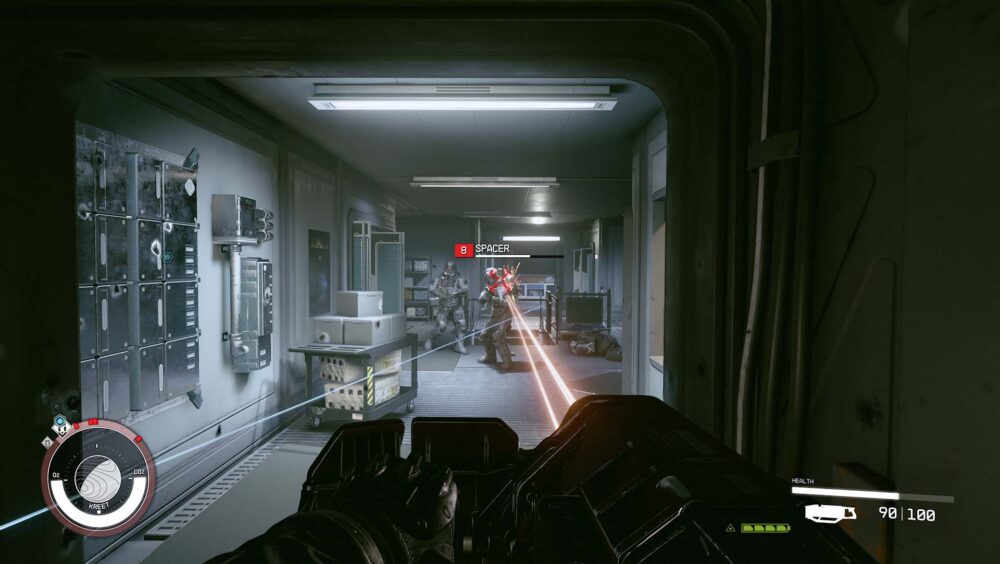
The fast travel system means you spend a good amount of time staring at loading screens, with how segmented Starfields game design is. While it would have been nice to freely take off and land on planets and fly seamlessly from planet to planet, I’ve spent enough time in No Man’s Sky to tell you that, outside of the obvious technical achievement it presents, it’s pretty tedious as well. Personally, I came to love the fast travel system but I do feel like the game could have handled it better and with less menu navigation.
Speaking of menus, you’re going to be spending a lot of time jumping between screens here, both for travelling and, more egregiously, for item management. Picking up all and sundry is another classic RPG design, but it’s very time-consuming here with multiple screens to roll through, even just to give something to your companion. It certainly needs some refinement.
One technical feat of Starfield is that Bethesda has definitely released their least buggy game to date. That isn’t to say there aren’t bugs, usually from NPCs and companion A.I., but the game is remarkably polished and stable.
Starfield is big and bold and everything you expect from a Bethesda game. There’s a wonderful story with wonderful quests across the world, fantastic companions with their own personalities that you can befriend and romance, excellent FPS gunplay and space combat, stunning visuals and amazing set design. The procedurally generated planets and the slow pace of exploration may not have reached the heights of everything else in the game, but that doesn’t stop Starfield from being a breath-taking, absorbing RPG that will suck up months of your life.
Read more reviews from us here https://invisioncommunity.co.uk/category/review/

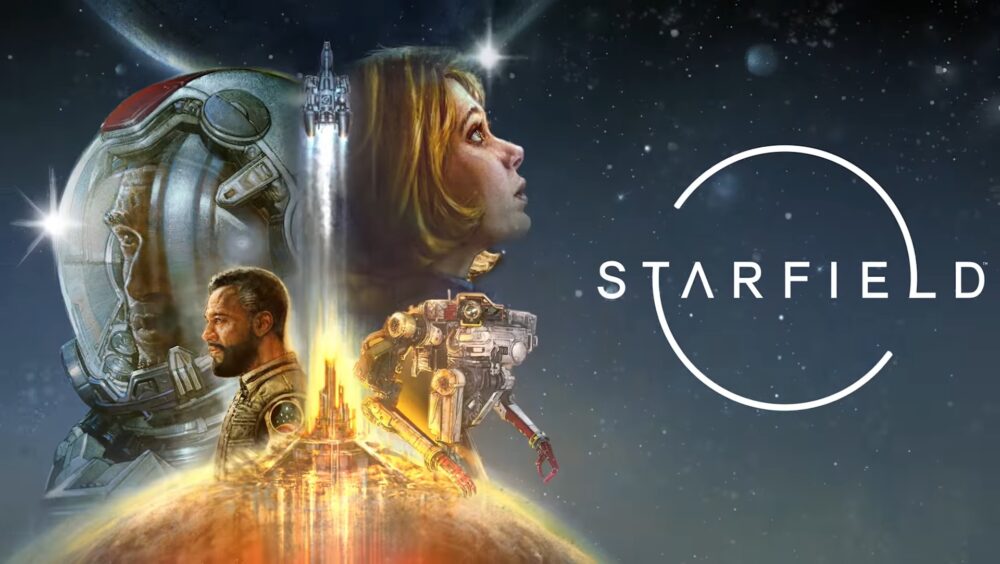






You must be logged in to post a comment.